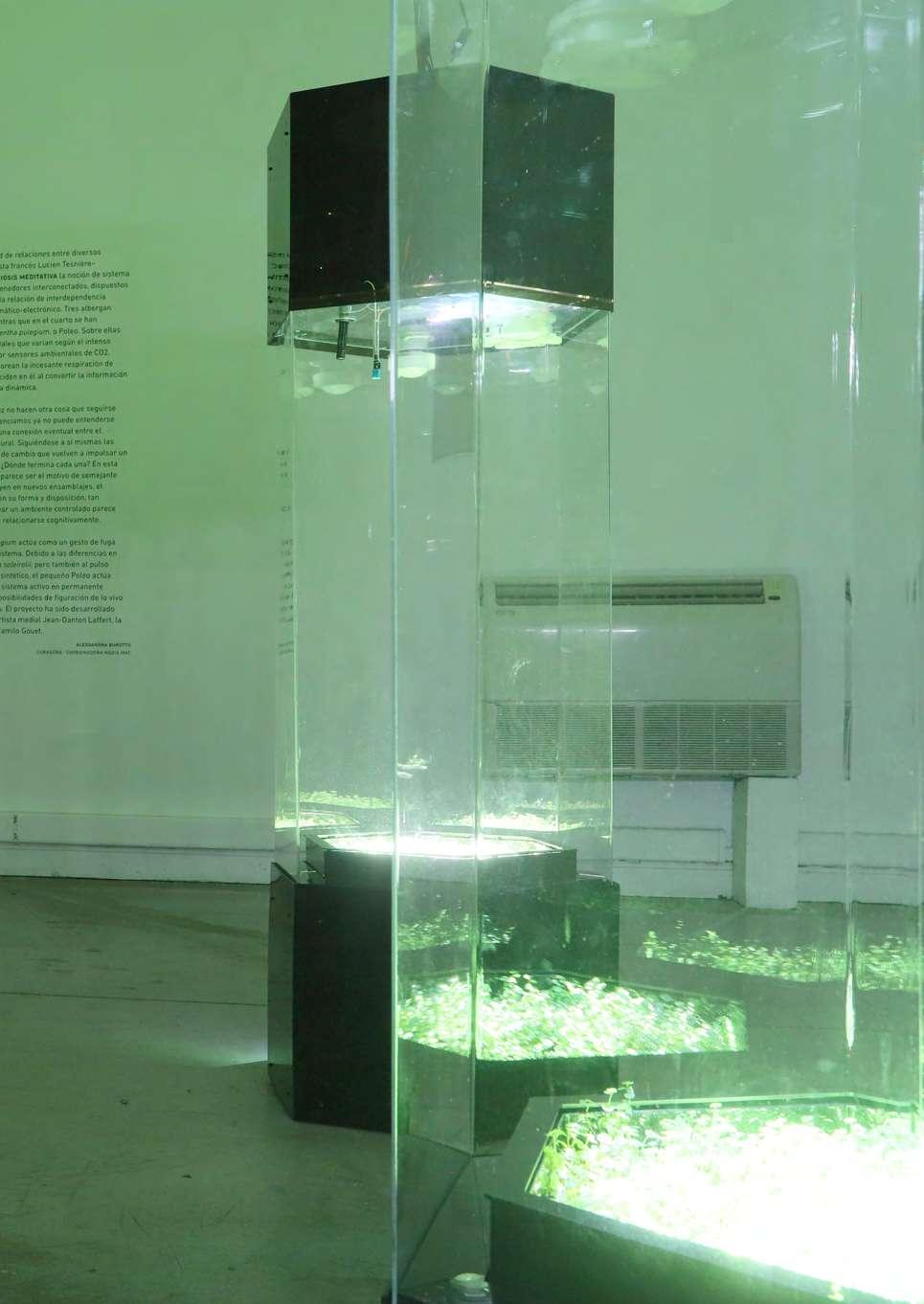
18 minute read
Daniel López del Rincón Habitar el Entre Dwell in Between
8
HABITAR EL ENTRE // DWELL IN BETWEEN
Advertisement
9
// Daniel López del Rincón
Doctor en Historia del Arte, profesor e investigador en la Universidad de Barcelona. Su trabajo gira en torno a los debates sobre la postnaturaleza, las prácticas bioartísticas y el pensamiento tecnocrítico. Esta línea le ha llevado a publicaciones tales como Bioarte. Arte y vida en la era de la biotecnología (Akal, 2015), Naturalezas mutantes. Del Bosco al bioarte (Sans Soleil, 2017) o Postnaturaleza (Etopia, 2018). Ha curado diversas muestras sobre arte contemporáneo, entre ellas Postnature. The Future is present, en el marco del festival Ars Electronica 2019 en Linz (Austria).
PhD in Art History, professor and researcher at the University of Barcelona. His work revolves around debates on post-nature, bio-artistic practices, and technocritical thinking. This line has led him to publications such as Bioarte. Art and life in the age of biotechnology (Akal, 2015), Mutant natures. From Bosco to bioart (Sans Soleil, 2017) or Postnaturaleza (Etopia, 2018). The Future is present, within the framework of the Ars Electronica 2019 festival in Linz (Austria).
10 La voluntad de unir arte y vida es una de las pulsiones más genuinas de la creación contemporánea. La obra Simbiosis meditativa se sitúa en el centro de este territorio contemporáneo, actualizando la relación entre arte y vida mediante un dispositivo que pone en juego un tercer elemento: la tecnología. Arte, bios y tecnología. Estos tres elementos se hibridan en esta obra cuya identidad mutante enraíza en la diversidad de perfiles de sus creadores, que buscan la permeabilidad entre las fronteras del conocimiento artístico, filosófico, científico. La facilidad con la que, en el plano teórico, se perfilan nítidamente estos tres ámbitos se desvanece en esta obra que es, ante todo, una obra inscrita en el entre: entre el pensar y el hacer, entre lo natural y lo tecnológico, entre lo controlable y lo impredecible, entre la ciencia y el arte. Una obra fractal que desactiva cualquier intento dualista de clasificarla y que, sin embargo, presenta sólidos principios estéticos que son, a su vez, materiales y discursivos. Discursos inscritos en la materialidad de la obra.

Una obra hecha de tiempo
Simbiosis Meditativa en Galería de arte Atelier Güell, Barcelona 2020. Simbiosis Meditativa at Atelier Güell art gallery, Barcelone, 2020.
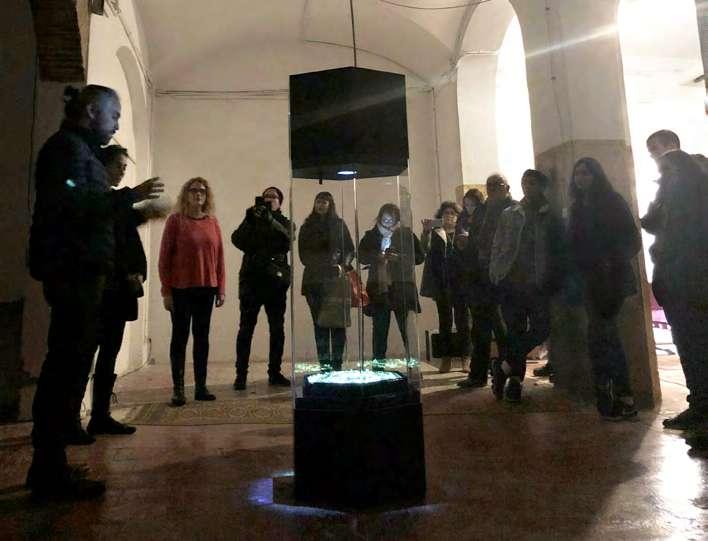
Simbiosis Meditativa en Ars Electrónica 2019. Simbiosis Meditativa at Ars Electronica, 2019. 11

The will to unite art and life is one of the most genuine drives of contemporary creation. The Meditative Symbiosis work situates itself at the center of this contemporary territory, actualizing the relation between art and life through a device that brings into play a third element: technology. Art, bios and technology. These three elements hybridize themselves in this work whose mutant identity roots itself in the diversity of the profiles of its creators, that seek the permeability between the borders of artistic, scientific, and philosophical knowledge. The ease with which, on the theoretical plane, these three spheres sharply delineate themselves evaporates in this work which is, before all, a work inscribed in the in-between: between thinking and doing, between the natural and the technological, between the controllable and the unpredictable, between science and art. A fractal work which deactivates any dualist attempt of classifying it and that, nevertheless, presents solid aesthetic principles which are, at the same time, material and discursive. Discourses inscribed in the work materiality.
12 Una obra hecha de tiempo
La historia del bioarte ha puesto de relieve que el interés del artista por la naturaleza no es exclusivamente discursivo sino material, manifestando un interés sin precedentes por lo vivo, la materia viva, una vida en gerundio en la que el tiempo, la duración, lo procesual, adquiere el estatuto de lenguaje artístico. Hasta el siglo XX, la naturaleza había estado muy presente en el arte, pero siempre de forma temática, en géneros tales como la pintura de paisaje o las naturalezas muertas. La obra Simbiosis meditativa sitúa la vida en primer plano, pero lo hace en términos discursivos y materiales. Materia vibrante, es una obra del tiempo, caracterizada por el cambio, la transformación. La dimensión procesual es identitaria de esta obra en la que, sin embargo, la escala del tiempo no es la humana: el ritmo de la obra responde, ante todo, a una lógica vegetal, aunque dependa también de otros factores, como la luz suministrada en forma de fractales por el dispositivo tecnológico. Este aspecto resulta interesante, especialmente si lo ponemos en relación con la rapidez, la inmediatez y la reactividad que afecta a muchas obras de arte electrónico interactivo. Los cambios se aprecian a lo largo de los días de exposición de la obra, y son cambios significativos, en efecto, pero no inmediatos. El trabajo con plantas, como sabe todo jardinero, es un trabajo lento; es, en palabras del bioartista George Gessert, “the slowest art”, un arte lento que responde quizás, a los efectos de la velocidad en nuestras vidas y en nuestra cultura contemporánea.
Simbiosis Meditativa en Galería Patio Bellavista, Santiago de Chile. 2017 Simbiosis Meditativa at Patio Bellavista Gallery, Santiago, Chile. 2017

An artwork made of time
The bio-art history has emphasized that the artist’s interest for nature is not exclusively discursive but material, manifesting an interest for the living without precedents, living matter, a life in gerund in which time, duration, the processual, gains the status of artistic language. Until the 20th century, nature had been very present in art, but always thematically, in genres such as landscape painting or dead nature. The work Meditative Symbiosis situates life at the forefront but does it in discursive and material terms. Vibrant matter, is a work of time, characterized by change, transformation. The processual dimension is identitary of this work in which the timescale is not the human one: the artwork’s rhythm responds, first, to a vegetal logic, even if depends also from other factors, such as light supplied in form of fractals by the technological device. This aspect results interesting, especially if we put it in relation with the speed, immediacy, and reactivity that affects many works of interactive electronic art. The changes are appreciated throughout the work’s exposition, and are significant changes, in effect, but not immediate. Working with plants, as every gardener knows, is slow work; it is, in the words of bioartist George Gessert, “the slowest art”, a slow art that maybe responds, to the effects of velocity in our lives and in our contemporary culture. 13

14 La simbiosis como decisión (est)ética.
Simbiosis mediativa no es solo un qué, un conjunto de materiales naturales y dispositivos tecnológicos, sino un cómo, una forma de relación entre un sistema vivo y un sistema tecnológico. La manera de conceptualizar la relación entre vida y tecnología puede ser múltiple y, con mucha frecuencia, ésta es la de la oposición. No es extraño que naturaleza y tecnología se hayan concebido como entidades contrarias si atendemos a su genealogía más o menos remota: physis y tekhné, en el mundo griego antiguo; naturalia y artificialia, en las cámaras de las maravillas del Renacimiento tardío. Genealogías que discurrían paralelas sin llegar a tocarse: la negación de la una suponía la afirmación de la otra. Sin embargo, el modo de relación entre tecnología y naturaleza que propone la obra que nos ocupa, es precisamente la contraria: la simbiosis. La simbiosis es, como decíamos, un modo de relación, lo que nos sitúa en el ámbito de la cooperación, en las antípodas de la dialéctica antinómica. La elección de este cómo es también un qué, puesto que inscribe la obra en un universo discursivo significativo, en sintonía con un momento, el actual, en que se están reivindicando modelos científicos como los de Lynn Margulis, que explican la evolución de la vida según un paradigma basado en la cooperación, frente a otros, como el de Charles Darwin, que explicaban la evolución en términos de competencia. La simbiosis es una elección que sitúa el plano estético en el de lo ético.
Autonomía, recepción y presencia
La experiencia de Simbiosis meditativa es, para un espectador acostumbrado a ser el protagonista de la experiencia estética, desconcertante. La relevancia que desde los años sesenta del pasado siglo ha cobrado la figura del espectador en la práctica artística, devino religión en el contexto de ese cajón desastre denominado “Arte y nuevas tecnologías”, y muy especialmente en el arte interactivo. Por eso resulta desconcertante presentarse ante una obra cuya autonomía hace que la misma presencia del espectador no sea necesaria. La innecesidad del espectador confiere a este el estatuto de vouyeur, facilitado por la prístina estructura hexagonal que no permite ver (espectar) lo que sucede en su interior, pero no participar de ello. Este desplazamiento del espectador discurre paralelo a otro desplazamiento, más profundo, que es el de la centralidad de lo humano. El cuestionamiento del “excepcionalismo humano”, por citar una expresión de Haraway, es fundamental para reprensar la relación entre naturaleza y tecnología y esa expereicnia se sitúa de manera paradigmática en esta obra, en la experien-
Symbiosis as aesthetic decision
Meditative Symbiosis is not just a what, a set of natural materials and technological devices, but a how, a form of relation between a living system and a technological system. The way of conceptualizing the relation between life and technology can be multiple, and very often, it is that of the opposites. It is not strange that nature and technology were conceived as opposite entities if we attend to their more or less remote genealogy: physis and tekhné, in ancient Greek; naturalia and artificialia, in the chambers of the late renaissance marvels. Genealogies that run in parallel without touching each other: the denial of one implied the affirmation of the other. Nevertheless, the mode of relation between technology and nature that the work at hand proposes, is precisely the opposite one: symbiosis. Symbiosis is, as we said, a mode of relation, which situate us in the scope of cooperation, at the antipodes of the antinomic dialectic. The choice of this how is also a what, since it inscribes the work in a meaningful discursive universe, in tune with a moment, the actual, in which scientific models as Lynn Margulis’s are being vindicated, that explain the evolution of life according to a paradigm based in cooperation, in the presence of others, such as Charles Darwin’s, which explained evolution in terms of competition. Symbiosis is a choice which situates the aesthetic plane onto the ethical one.
Autonomy, reception, and presence
The experience of Meditative Symbiosis is, for a spectator used to be the protagonist of the aesthetic experience, baffling. The relevance that has gained the figure of the spectator since the sixties in the artistic practice, became religion in the context of that mixed bag called “Art and new technologies”, and very specially in interactive art. Because of that it results disconcerting to appear before a work whose autonomy makes unnecessary the very presence of the spectator. The spectator needlessness gives him/her the status of voyeur, facilitated by the pristine hexagonal structure that does not allow to see (to spectate) what happens in its interior, but not to participate in it. This displacement of the spectator runs in parallel with another deeper displacement, which is that of the centrality of the human. The questioning of “human exceptionalism”, quoting an expression by Haraway, is fundamental to rethink the relation between nature and technology and that experience is situated in a paradigmatic way in this work, in the spectator’s decentered experience. This apparent work indifference with respect to the participation of the receiver contrasts, however, with 15
16

Tres estados de crecimiento de la Soleriolia Soleirolii en Simbiosis Meditativa Three growing states of the Soleirolia Soleirolii at Simbiosis Meditativa.
17

18 cia descentrada del espectador. Esta aparente indiferencia de la obra con respecto a la participación del receptor contrasta, sin embargo, con la importancia de este en términos de presencia. Por que los efectos de presencia del espectador son invisibles, pero actuales y efectivos. Sirva de ejemplo que, en algunos momentos de su exhibición en los cuales se produjo un aumento significativo del público, se produjera también un aumento de los niveles de dioxido de carbono de la obra, alterando, por tanto, la interacción entre el sistema vivo y el electrónico y generando un comportamiento que estaba absolutamente en sintonía con lo que estaba suciediendo alrededor. Una obra, por tanto, que depende de su situación en el tiempo y el espacio: un environment, en el que el objeto que identificamos con la obra (la columna hexagonal) no es más que una parte, quizá la protagonista de un sistema de relaciones más amplios que, esta vez sí, incluye al espectador y lo hace participante.
Hacer visible lo invisible

El modo en que se relacionan el sistema vivo (las plantas de la especie soleirolia soleirolii) y el sistema tecnológico en la instalación Simbiosis meditativa es, en su mayor parte, invisible. Hacer visible lo invisible es, en palabras de Paul Klee, la verdadera función del arte, y devuelve a la práctica artística allá donde siempre estuvo, en el terreno de la revelación. No vemos el dioxido de carbono expulsado por las plantas, ni sus oscilaciones; tampoco vemos cómo estos datos son leídos por el dispositivo tecnológico. Sin embargo, eso es lo que está pasando, porque la vida es, en su mayor parte, proceso invisible al ojo humano. Sí que vemos, sin embargo, la luz emitida por el dispositivo, cuya intensidad se modula en función de las lecturas de dioxido de carbono emitido por la comunidad vegetal, en una intensidad variable que persigue el equilibrio: un equilibro dinámico y oscilante, que solo puede apreciarse, como decíamos, en el devenir del tiempo. De este modo no vemos lo que sucede, pero sí sus efectos. Esta invisibilidad, verdadera materia prima de esta obra, afecta al que es su verdadero centro: el proceso de lo viviente. La vida haciendo lo que esta hace, mutar, cambiar, desarrollarse e, incluso, exceder las expectativas que se tiene de ella.
the importance of this one in terms of presence. Because the spectator’s presence effects are invisible, but actual and effective. As an example of that, in some moments of its exhibition in which there was a significant increase in the public, there was also an increase in the levels of carbon dioxide, thus altering the interaction between the living and the electronic system and generating a behavior that was absolutely in tune with what was happening around. A work, therefore, that depends on its situation in time and space: an environment, in which the object that we identify with the work (the hexagonal column) is only a part, perhaps the protagonist of a system of broader relationships that, this time, include the viewer and make him a participant.
Making visible the invisible
The way in which the living system (plants of the species soleirolia soleirolii) and the technological system are related in the Meditative Symbiosis installation is, for the most part, invisible. Making the invisible visible is, in the words of Paul Klee, the true function of art, and it takes the artistic practice to where it always was, in the realm of revelation. We do not see the carbon dioxide expelled by the plants, nor their oscillations; we also do not see how this data is read by the technological device. However, that is what is happening, because life is, for the most part, a process invisible to the human eye. We do see, however, the light emitted by the device, whose intensity is modulated depending on the carbon dioxide readings emitted by the vegetal community, in a variable intensity that seeks balance: a dynamic and oscillating balance, which only it can be appreciated, as we said, in the passing of time. In this way we do not see what happens, but we do see its effects. This invisibility, the true raw material of this work, affects what it is its true center: the process of the living. Life doing what it does, mutate, change, develop and even exceed expectations of it. 19
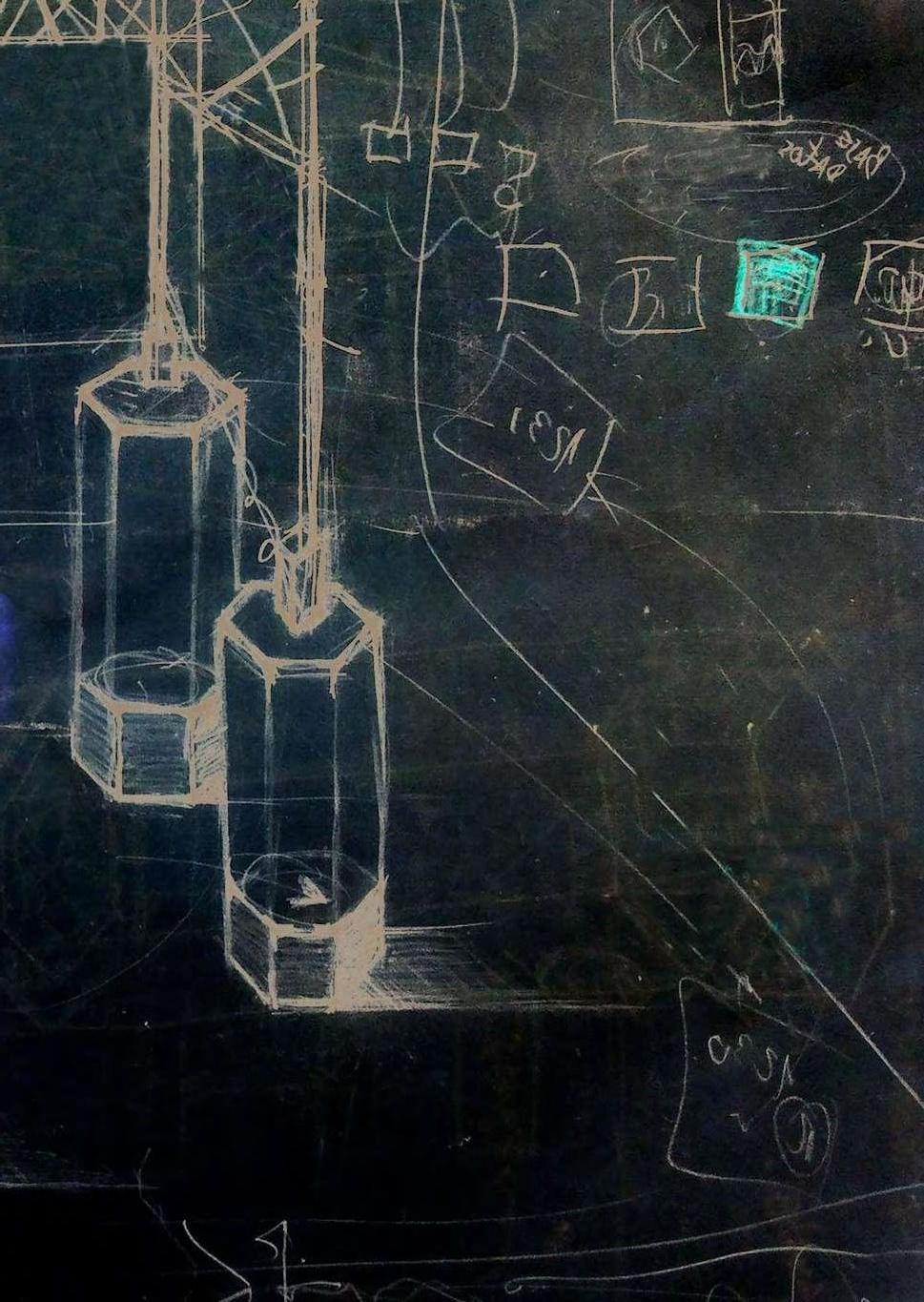
20
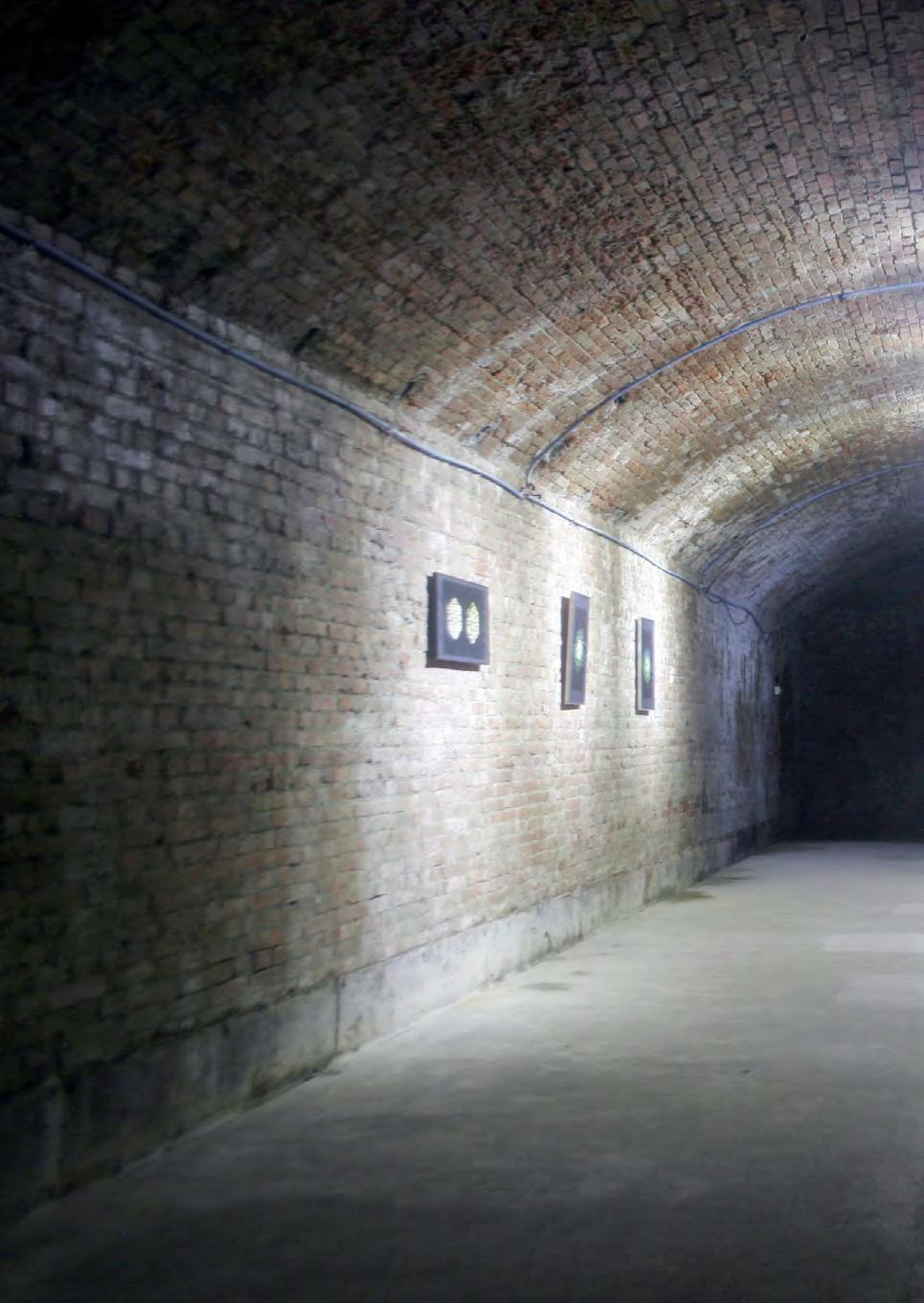
Simbiosis Meditativa en Museo de Arte Contemporáneo de Valdivia, Valdivia, Chile. 2017 Simbiosis Meditativa at Contemporary Art Museum of Valdivia, Valdivia, Chile. 2017
21
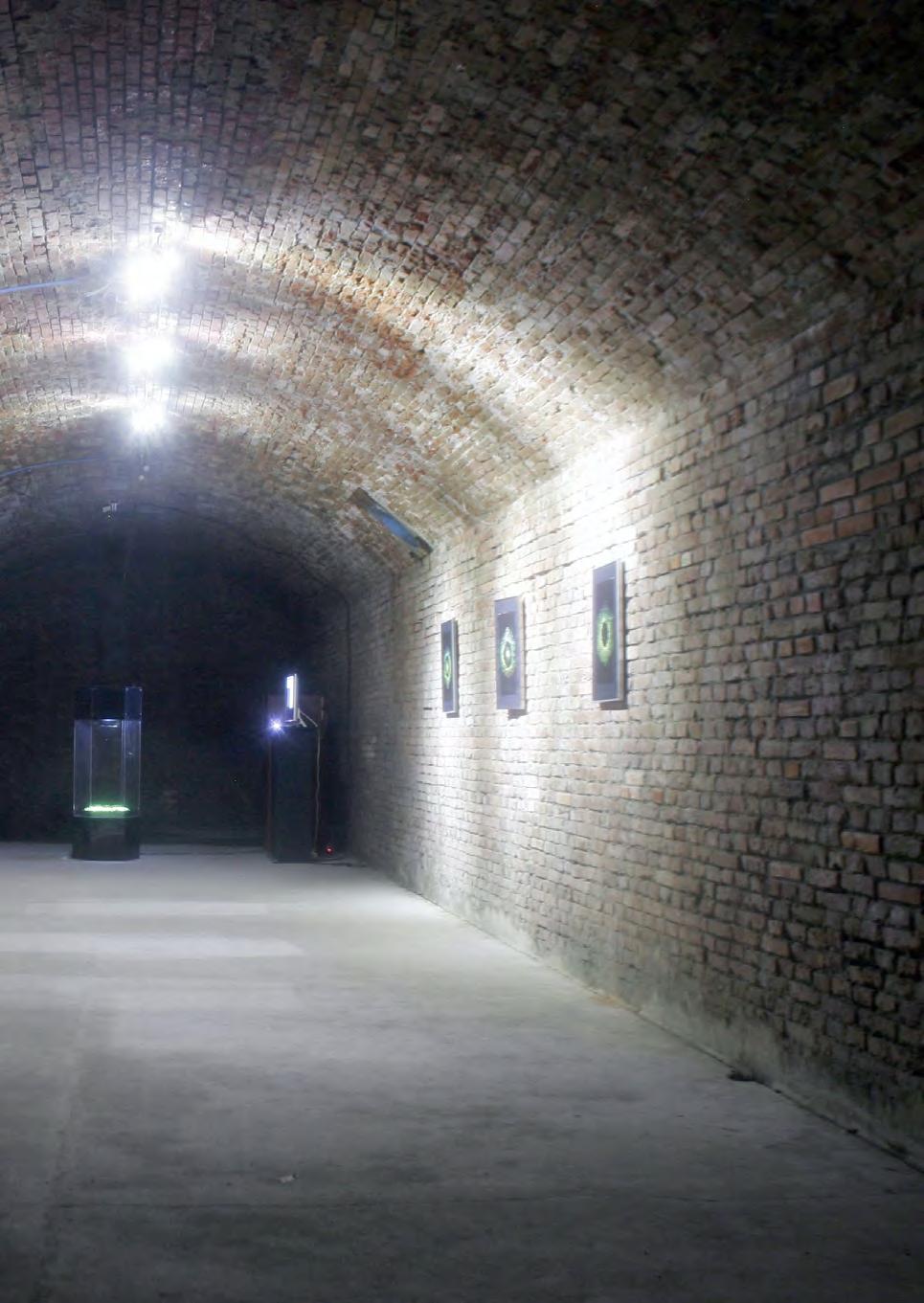
22 Control y resistencia
El trabajo con biomateriales genera siempre consecuencias imprevistas puesto que la naturaleza, especialmente cuando se la inserta en sistemas de control, presenta vectores de resistencia, que son fácilmente legibles en términos de desorden y, por tanto, de escape. Los registros de datos de Simbiosis meditativa, traducidos en gráficos, han resultado a menudo inesperados, incluso para sus creadores: la obra no siempre se comportaba como lo que se esperaba de ella. Y es que la naturaleza (y de ahí arrancan muchas puganas entre físicos y biólogos) no responde a expectativas, y ese carácter es el que otorga a esta obra, que se desarrolla en un equilibrio dialogado entre una entidad natural y otra artificial, un punto de fuga hacia el descontrol, hacia el afuera, hacia la otredad, hacia lo imprevisto. La obra, materia viva, genera expectativas, sobre todo en términos de predicción científica (pasará esto, pasará aquello), haciendo que a menudo la realidad desmienta lo que se espera de ella. La vida, ingobernable, como resistencia. La obra, en definitiva, como parcela de lo real, emancipada incluso de la voluntad de sus creadores. Lo real, entendido, parafraseando a Hegel, como lo que se nos resiste.
Daniel López del Rincón es doctor en Historia del Arte, profesor e investigador en la Universidad de Barcelona. Su trabajo gira en torno a los debates sobre la postnaturaleza, las prácticas bioartísticas y el pensamiento tecnocrítico. Esta línea le ha llevado a publicaciones tales como Bioarte. Arte y vida en la era de la biotecnología (Akal, 2015), Naturalezas mutantes. Del Bosco al bioarte (Sans Soleil, 2017) o Postnaturaleza (Etopia, 2018). Ha sido profesor invitado en múltiples centros, como la Universidad Complutense de Madrid, el MACBA, el CENDEAC, la Universidad Tres de Febrero, la Universidad de Buenos Aires o el Courtauld Institute of Art de Londres. Ha curado diversas muestras sobre arte contemporáneo, entre ellas Postnature. The Future is present, en el marco del festival Ars Electronica 2019 en Linz (Austria).
Control and resistance
Working with biomaterials always generates unforeseen consequences since nature, especially when inserted into control systems, presents resistance vectors, which are easily readable in terms of disorder and, therefore, of escape. The data records of Meditative Symbiosis, translated into graphics, have been often unexpected, even for its creators: the work did not always behave as expected. And it is that nature (and from there many struggles between physicists and biologists start) does not respond to expectations, and that character is what gives this work, which is developed in a dialogued balance between a natural entity and an artificial entity, a point of flight towards the lack of control, towards the outside, towards the otherness, towards the unforeseen. The artwork, living matter, generates expectations, especially in terms of scientific prediction (this will happen, that will happen), causing reality to often deny what is expected of it. Life, ungovernable, as resistance. The work, in short, as an area of the real, emancipated even from the will of its creators. The real, understood, paraphrasing Hegel, as what resists us.
23
Daniel López del Rincón is a doctor in Art History, professor and researcher at the University of Barcelona. His work revolves around debates on postnature, bio-artistic practices, and techno-critical thinking. This line has led him to publications such as Bioarte. Art and life in the age of biotechnology (Akal, 2015), Mutant natures. From Bosco to bioart (Sans Soleil, 2017) or Postnaturaleza (Etopia, 2018). He has been a visiting professor at multiple centers, such as the Complutense University of Madrid, MACBA, CENDEAC, Tres de Febrero University, the University of Buenos Aires or the Courtauld Institute of Art in London. He has curated various exhibitions on contemporary art, including Postnature. The Future is present, within the framework of the Ars Electronica 2019 festival in Linz (Austria).
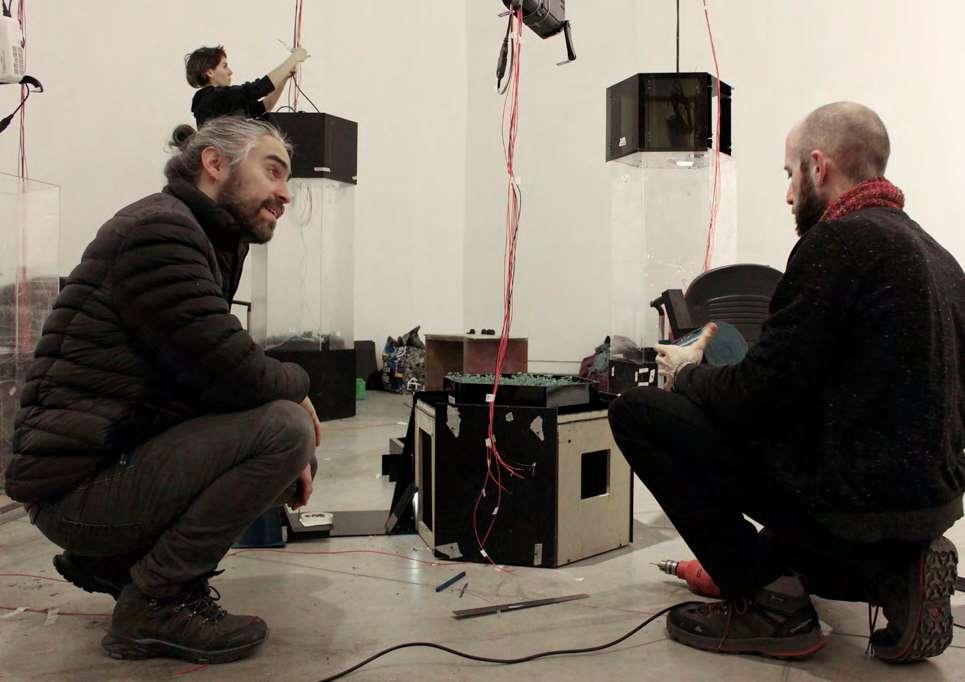
24
Proceso de montaje de Simbiosis Meditativa en Museo de Arte Contemporáneo de Santiago, 2018. Asseambly process of Simbiosis Meditativa into the Contemporary Art Museum, Santiago, 2018.
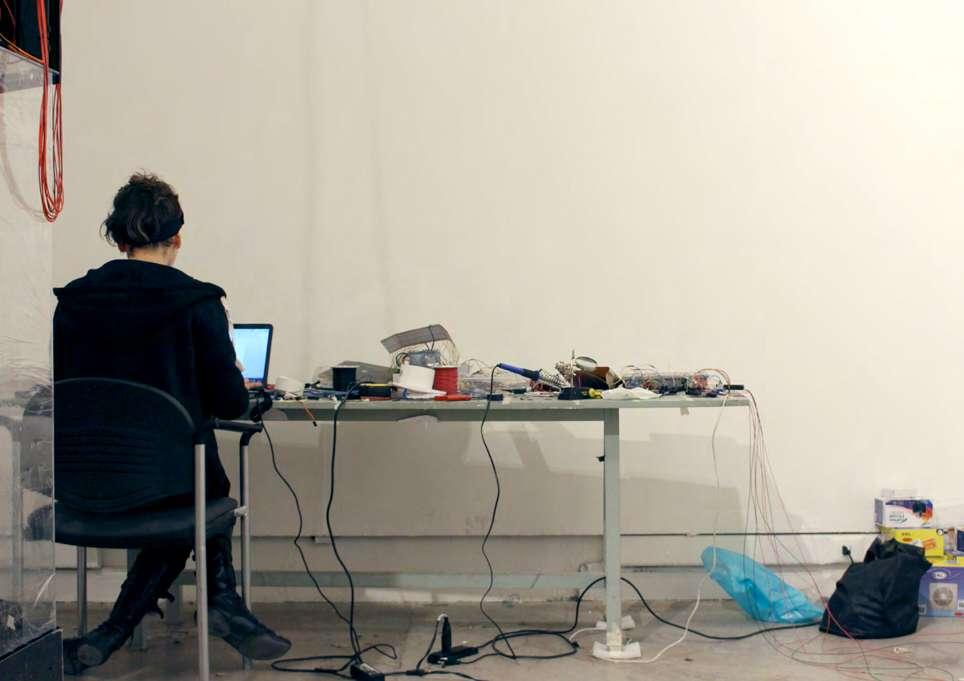

25
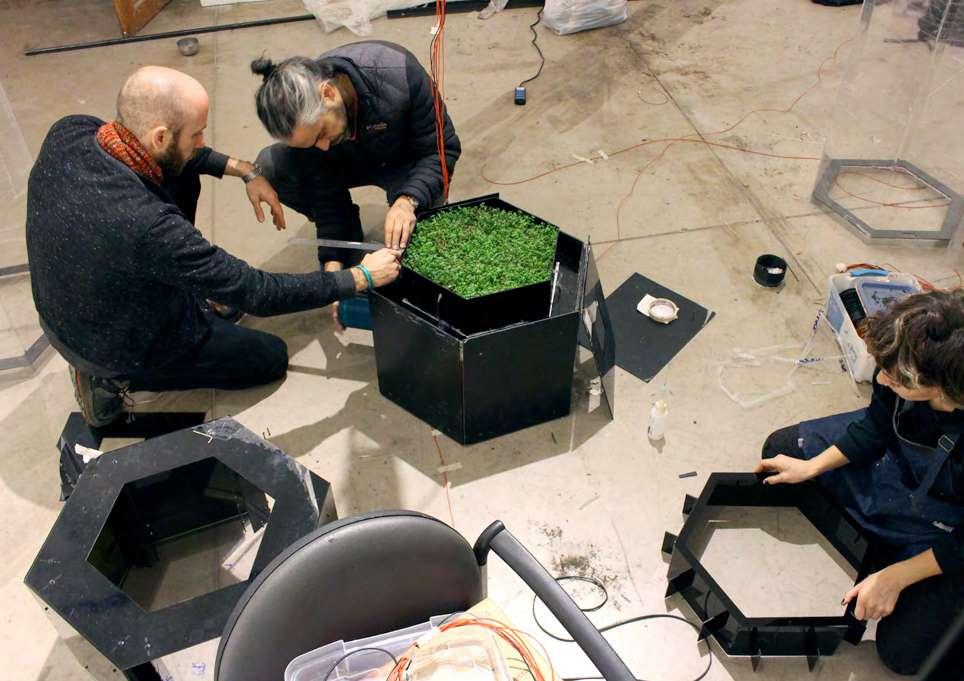
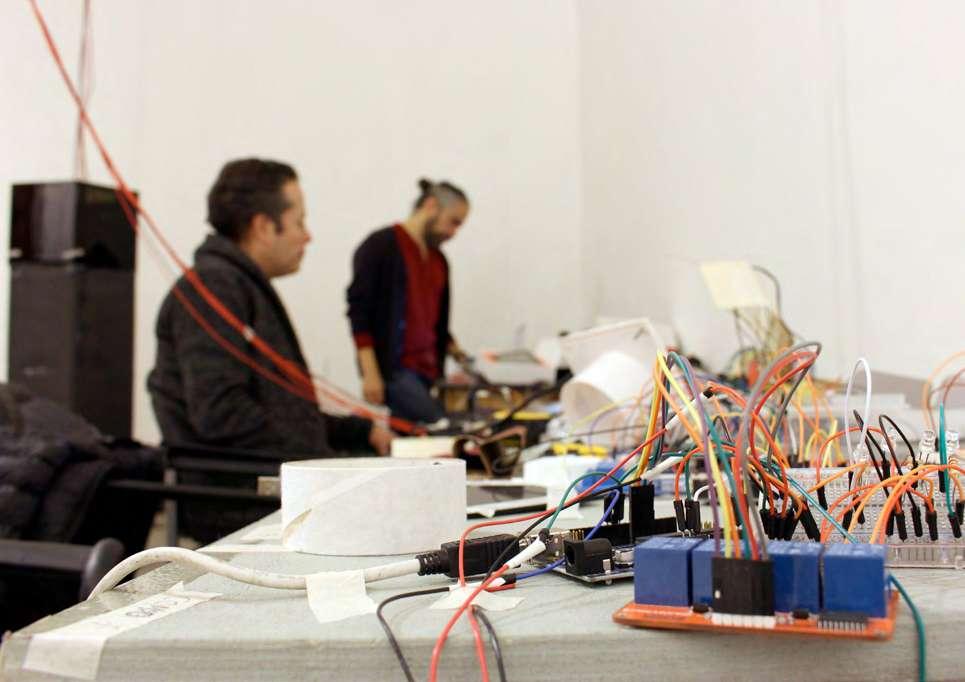
26
Proceso de montaje de Simbiosis Meditativa en Museo de Arte Contemporáneo de Santiago, 2018. Asseambly process of Simbiosis Meditativa into the Contemporary Art Museum, Santiago, 2018.
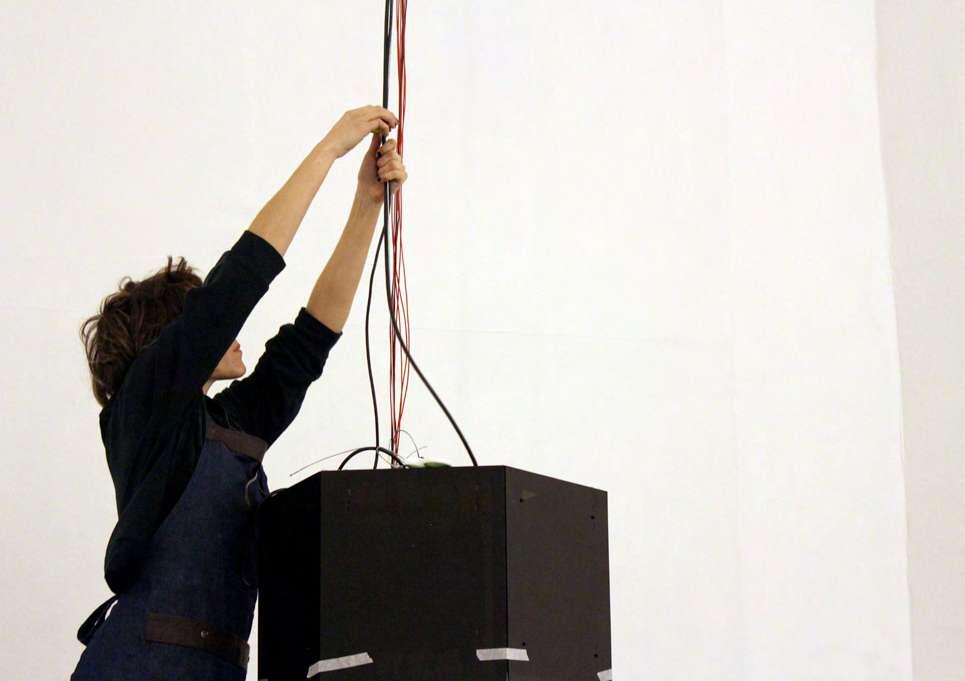
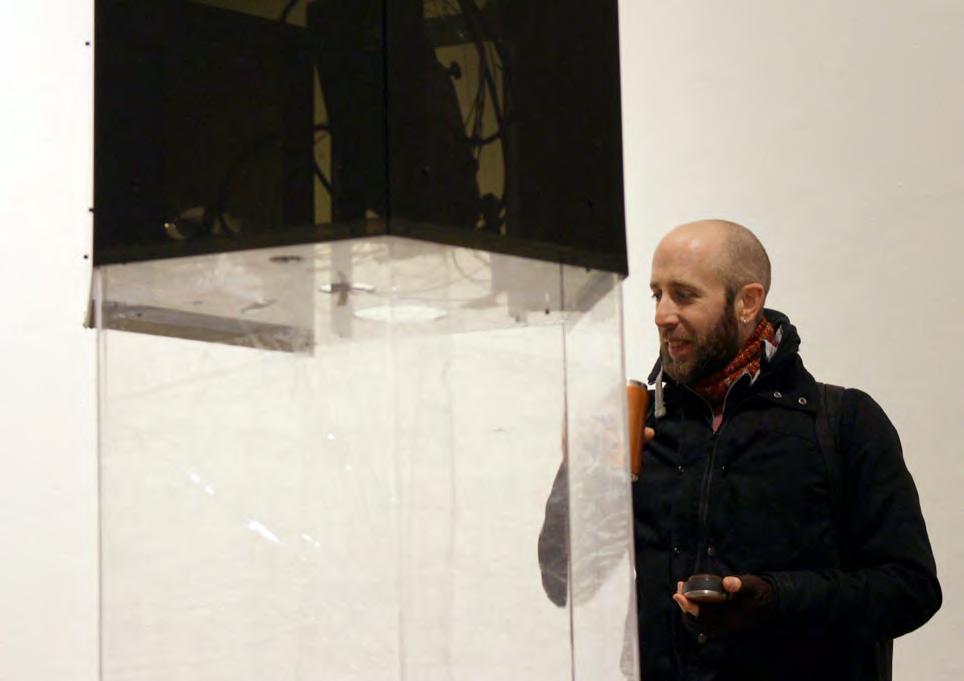
27

28
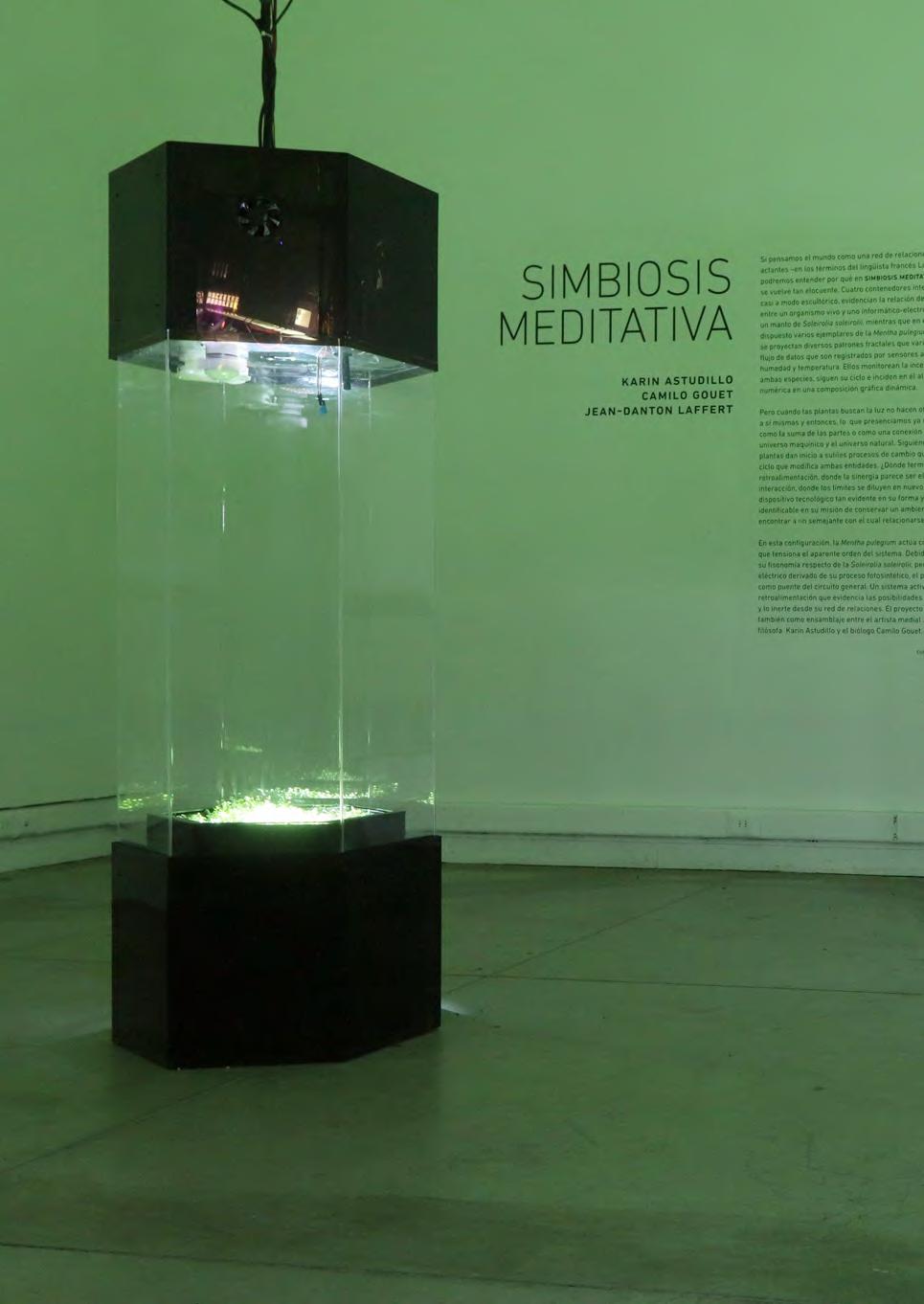
Simbiosis Meditativa en Museo de Arte Contemporáneo de Santiago, 2018. Simbiosis Meditativa at the Contemporary Art Museum, Santiago, 2018.
29
